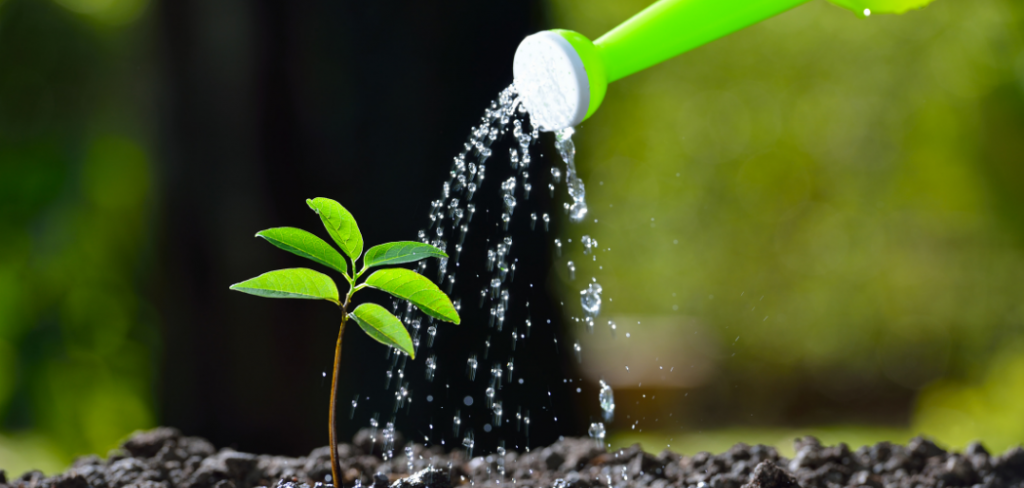Plants are living things. They grow in the earth and they are essential for the entire earth’s ecosystem. Plants are autotrophs and produce their own food. They consist of stems, roots, and leaves. Plants are also important for the maintenance of the ecological balance of the earth. Therefore, like humans and animals, plants need water to live and survive.
Plants need water to carry out their basic functions. Therefore, it is the primary element that makes up a plant’s cellular structure. As humans have 70% water in their system, plants are made up of about 95% water. It helps transport nutrients and provides energy. Thus, without water, plants would be unable to carry out all their important functions.
Why Plants Need Water
Plants need water for four major reasons which include structure, photosynthesis, translocation, and transpiration.
Structure
Plants do not have internal or external structures to give them their structures, unlike animals. However, plants require a type of structure that would help maintain their form and rigidity, and also for them to grow.
Almost all plants get their rigidity from the pressure of water in their cells. Some trees make use of lignin for their rigidity as well. This pressure of water is called turgor.
Plant cells are made up of various components. Some of these components are the mitochondria which convert sugar into the energy required. And then chloroplasts that contain chlorophyll used in photosynthesis. A vacuole is the biggest component of a plant’s cell. It is made up of water that helps maintain the cell’s structure.
With the right amount of water, vacuoles in all the cells of a plant’s structure keep the cells in the right tension, thereby giving the plant enough strength. Plant cell maintains its flexibility because of liquid this enables them to adapt to any surrounding. Animals do not have this flexibility.
Plants need water during photosythesis
Photosynthesis is when plants make their own food and grow, thereby passing energy to animals and humans. In a more definitive term, photosynthesis is when green plants i.e. chlorophyll-containing plants utilize sunlight to produce glucose from the air, water, and carbon dioxide. Without water, plants cannot photosynthesize and therefore, cannot grow.
In photosynthesis, plants convert carbon dioxide into sugar and oxygen in the presence of sunlight. The sugar formed is then stored in form of starch which is then used for the growth and maintenance of the plant.
The key things plants utilize for photosynthesis are water, air, sunlight, soil, and warmth. It is as important to plants as blood is important to animals.
Aside from water, plants need air.
Through the process of respiration by animals as waste products, the air is consists of about 0.03% of carbon dioxide. Waste products obtains carbon dioxide also through the process of decomposition.
Plants absorb carbon dioxide through the stomata. During photosynthesis, it then converts the absorbed carbon dioxide into sugar, oxygen, and water.
Plants need carbon dioxide from the air for photosynthesis to occur. It also helps keep the environment clean by removing toxic waste product and utilizing it to produce clean oxygen.
Sunlight
All green plants contain a green pigment known as chlorophyll. For photosynthesis to start, chlorophyll has to react with the sun from the plant. Why do plants need sunlight? Without the sun, the photosynthetic process would not take place.
Plants need soil.
Plants grow in soil that is fertile and full of nutrients. Infertile soils cannot promote the plant’s growth and development. Every plant has a specific type of soil that it thrives on, depending on the habitat it grows in. Some plants grow in areas where there is little availability of water because they have good retention skills.
And the right amount of warmth
The right temperature helps plants grow at their optimum level. Environments that are too cold might lead to slower life processes and could cause them to wither and die.
Translocation
Translocation is the movement of water through the parts of plants. Water aids in moving the nutrients around the plant. Plants need sufficient hydration to grow because they absorb nutrients in solution.
It takes up nutrients by the roots moved by water around the plants. The process is known as “capillary action” which makes use of the tension of water to move it around the plant. It helps nutrients get to their required locations. Water also gets to the leaves and this aids the plant in its photosynthetic process. Translocation move sugar produced during photosynthesis. And then back down to the roots to help the plant grow.
Transpiration
Transpiration is the process of water evaporation through its aerial points – stems, leaves, flowers. As transpiration occurs, translocation also occurs at the same time. This enables plants to have more nutrients for growth and maintenance. It helps to keep the internal system of the plant balanced by regulating what goes in and what comes out.
Factors affecting the rate at which transpiration occurs include temperature, light, and humidity. Temperatures that are warmer increase the rate at which transpiration occurs. Because plants need sunlight to function, transpiration occurs less in the dark and more in the light. Plants easily release moisture in less humid environments i.e. drier environments.
CONCLUSION:
It is obvious that without water, plants cannot carry out any activity required for their growth and maintenance. The four major reasons why plants need water are essential processes that the plant requires to grow. One cannot function without the other.
If there is an insufficient amount of water in the soil, photosynthesis, transpiration, and translocation will cease. Without water, plants starve. The leaves begin to curl up, lose color, and turn brown.
As long as there is a sufficient amount of water in the soil, plants would continue to thrive and grow, thereby providing animals and humans with food and clean air.
Plants like bees are self-sufficient after humans or nature provide for their basic needs to grow and multiply. Isn’t it amazing to know?
